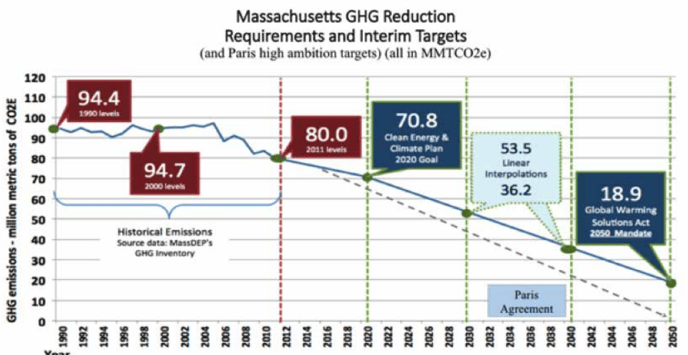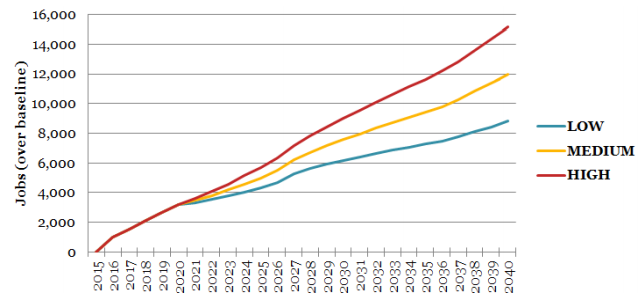In April, Mass Energy and People's Power & Light's Executive Director Larry Chretien spoke in front of a group from the Boston Area Sustainable Investment Consortium (BASIC). Larry spoke about policies that stimulate investment in renewable energy and how they can pay off. Below is a recap written by a BASIC member, Dan Saccardi from Synapse Energy Economics.
In April, Mass Energy Consumers Alliance’s (Mass Energy) Executive Director, Larry Chretien, led a discussion on Massachusetts’ progress towards achieving its greenhouse gas (GHG) emissions reduction commitments. The event was hosted by Building A Sustainable Investment Community (BASIC) Boston and Mass Energy at the Unitarian Universalist Association. Larry outlined Massachusetts’ need to follow through on its ambitious commitments, the significant business opportunity in achieving The Commonwealth’s goals, examples of municipal leadership, and what to do going forward.
Pioneering leadership needs follow through
In 2008, Massachusetts passed the pioneering Global Warming Solutions Act (GWSA). GWSA mandates that MA reduce GHG emissions to 25% and 80% below 1990 levels by 2020 and 2050, respectively. However, the ambition of these targets hasn’t been matched by an actionable roadmap. The MA Department of Environmental Protection (DEP) is more than three years late in establishing the necessary regulations to guide the necessary action steps. As Larry has written about in greater detail, if the current pace of GHG emissions reductions continues, MA will miss its 2020 target and fail to get a good start on targets for later years
GWSA GHG Emissions Reduction & Requirements

To avoid this outcome, Mass Energy and the Conservation Law Foundation led and won a legal challenge to push the DEP to resolve the regulatory uncertainty that is hampering bolder energy innovation.
Significant business opportunity
With the costs of solar, wind, LEDs, and batteries falling sharply, there are increasing options to economically meet MA’s energy demand with in-state renewable energy and energy efficiency. And since MA imports 80% of its energy, the more (clean) energy that’s produced in-state, the more jobs and economic opportunity that will be generated.
Funding MA’s energy imports diverts significant in-state resources

Implementing a price on carbon would be an even bolder measure. Larry highlighted a MA Department of Energy Resources (DER) study concluding that a carbon tax, in addition to reducing GHG emissions, would create jobs and increase household income by stimulating broader economic development within and beyond the energy sector.
MA Carbon Tax: Total Employment Change vs. Baseline

Municipal Leadership
Even in the absence of clear guidance, some municipalities are implementing innovative policies that others should emulate. Larry highlighted how Melrose and Dedham are increasing their renewable energy consumption. Through Green Municipal Aggregation, they have pooled residential and municipal demand to purchase enough renewable energy to surpass MA’s renewable portfolio standard (RPS) 2016 mandate of 11% renewables by nearly 50%.
Getting Massachusetts back on track to 2020 and beyond
Larry emphasized that it’s not too late to achieve the 25% GHG emissions reduction mandate. DEP finally promulgating enforcement regulations is an important step. Additionally, Governor Charlie Baker and state legislators should take a hard look at proposed natural gas pipelines. Approving them would ensure that the 2020 (and likely 2050) goal will not be met, and will drive fossil fuel imports further upwards. Municipalities should follow Melrose’s and Dedham’s lead and implement their own Green Municipal Aggregation programs and the state should ramp up the RPS targets and investments in energy efficiency–the most cost-effective option with the largest GHG emissions reduction potential. Finally, companies, municipalities, and residents can advocate for a price on carbon to achieve the emissions reductions and economic benefits enumerated in the DER study.



Comments